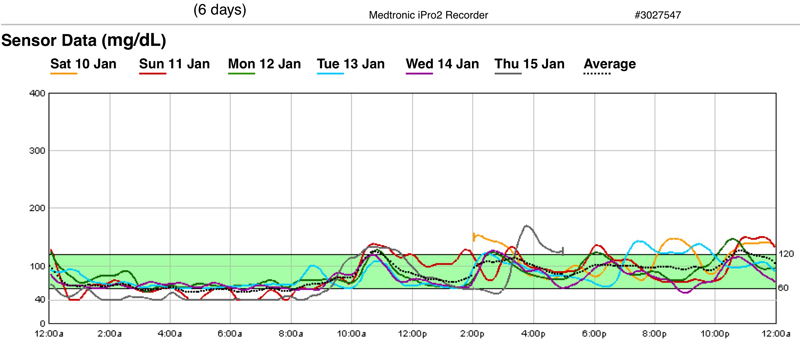
1. Periodic CGM helps giving birth to healthier children
![]() A new study published in Diabetes Care says achieving better glucose control in pregnant women with diabetes by using Continuous Glucose Monitoring System (CGMS) may help them give birth to healthier children. To know more about CGM view this video (English and Malayalam).
A new study published in Diabetes Care says achieving better glucose control in pregnant women with diabetes by using Continuous Glucose Monitoring System (CGMS) may help them give birth to healthier children. To know more about CGM view this video (English and Malayalam).
![]() The research team, from the University of Leeds’ School of Medicine, has worked out a way to interpret the complex data provided by CGM devices, so they get a much clearer picture of the glucose control across the 24-hour day that is associated with having a large baby.
The research team, from the University of Leeds’ School of Medicine, has worked out a way to interpret the complex data provided by CGM devices, so they get a much clearer picture of the glucose control across the 24-hour day that is associated with having a large baby.
![]() The devices usually consist of a tiny probe that sits just under the skin and a small data monitor that sits on the skin (about the size of a coin), measuring glucose levels all day, every day, revealing in detail glucose changes that may otherwise be missed with finger-prick testing alone.
The devices usually consist of a tiny probe that sits just under the skin and a small data monitor that sits on the skin (about the size of a coin), measuring glucose levels all day, every day, revealing in detail glucose changes that may otherwise be missed with finger-prick testing alone.
![]() Dr. Eleanor Scott( Consultant in Diabetes and Endocrinology) who led the research with Dr. Graham Law,(Senior Lecturer in Statistical Epidemiology)said: “Women can use this data to make sure that the times of day when glucose seems to run higher are periods where they are particularly careful to keep their glucose as close to normal as possible. They can do this by consulting with their ‘diabetes in pregnancy’ clinical teams who will be able to advise on timing of insulin, timing and types of food to help smooth the glucose profiles and avoid these problem areas.”
Dr. Eleanor Scott( Consultant in Diabetes and Endocrinology) who led the research with Dr. Graham Law,(Senior Lecturer in Statistical Epidemiology)said: “Women can use this data to make sure that the times of day when glucose seems to run higher are periods where they are particularly careful to keep their glucose as close to normal as possible. They can do this by consulting with their ‘diabetes in pregnancy’ clinical teams who will be able to advise on timing of insulin, timing and types of food to help smooth the glucose profiles and avoid these problem areas.”
![]() Fluctuating glucose levels in pregnant women with diabetes, revealed by monitoring, may be a way to detect babies who are large for gestational age.
Among women with infants who were large for gestational age, functional data analysis showed that glucose levels varied by both time of day and by trimester.
Fluctuating glucose levels in pregnant women with diabetes, revealed by monitoring, may be a way to detect babies who are large for gestational age.
Among women with infants who were large for gestational age, functional data analysis showed that glucose levels varied by both time of day and by trimester.
 |
For enquiries info@jothydev.net.
Please visit: jothydev.net | research.jothydev.com | diabscreenkerala.net | jothydev.com/newsletter
